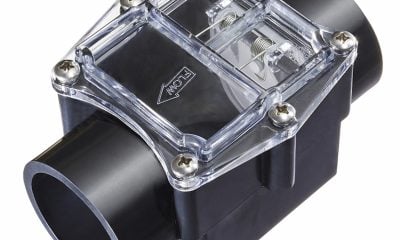Contractors and Builders
Pool Builder Mistakes: Reusing Rebound

Use of Rebound
In the pool industry, it is against best practices that builders even think of reusing rebound. This is a cardinal sin that’s not approved, and contractors should forget about it. Any pool builder who does this violates their professional work ethics. The outcome will be a risky substandard structure.

Improvements
On the positive side, there has been less use of rebound. Enlightening the public has made this step possible. For 20 years lectures by professionals, publications accepted by American Shotcrete Association, and American Concrete Institute have set clear guidelines on the expected construction standards. They are all strongly opposed to the use of rebound. However, it is not surprising that some contractors continue with this practice in secret. This is only common with substandard companies. They use rebound to cover the large area and crust from the real concrete to construct the step, bench, tanning shelf, and other small pool features. They are discovered from the resulting failures of their constructions, while others caught in the act of their misguided practice. Such contractors are greedy, only thinking about saving money while luring the client. The outcome is disastrous, and it is a huge mistake!
A wrong move
Rebound is an actual waste and should be disposed of in the trash. It is waste created by Shotcrete. That is a normal and essential part of the construction process. Enough Shotcrete ought to generate huge amounts of rebound. Deceitful contractors who want to save money meant to buy extra materials use rebound to make some pool features. It is also referred to as an ‘Aggregate rejection process, ‘ meaning it no longer contains cement to make a structure firm. The durability of such structures is comparable to a beach sandcastle.
The ultimate price
In a nutshell, rebound creates a vacuum that can result in the eventual failures of the structure. It leads to delamination of surface materials as well as cracks. The biggest problem falls with the cracks that will lead to intrusion of water to the concrete parts. The development of statutes has been key to make the use of rebound illegal. Section 3 of AC1506R16, Guide to Shotcrete installation, forbids the use of discarded Shotcrete. In addition, the International Building Code section 1913.6 advocates for the elimination of loose aggregate from the sites before introducing initial or successive layers of Shotcrete. This emphasizes the fact that rebound is waste that needs immediate disposal.
Contractors and Builders
Insurance Premiums on the Rise: How Pool Pros Can Stay Afloat
One pool company reevaluted their insurance carrier when faced with a premium increase. Learn why weighing your options may not be a bad idea.

Recently, Grimes Pools was in the thick of their busy season. Builds were in every stage, some still in permitting, others halfway done, and they barely had time to look up. Then their renewal hit: another premium increase with no heads-up and no strategy to reduce it.
Fortunately, they reevaluated their needs with a new carrier who stepped in with a clear plan: a full review of their program, a benchmark against industry peers, and a roadmap for how to move forward. Going with a pool-specific program, resulted in about 15 percent savings, and risk management improvements like driver safety protocols and subcontractor agreements. Today, they have direction, better protection, and the confidence to focus on growing their business.
So why are companies like Grimes Pools seeing their rates spike? And more important, how do you stay afloat? Let’s dive into the four forces pushing premiums higher, the pitfalls to watch when you shop for coverage, and the practical steps that can soften the blow at renewal time.
The Four Currents Lifting Pool Insurance Premiums
1. Claims and litigation are swelling.
Slip-and-falls around wet decks, chemical handling injuries, construction defect suits—every claim costs more than it did five years ago. Industry-wide, liability payouts have surged, climbing an average of 16% annually, with no slowdown in sight. Juries are also handing out larger awards (the so-called “social inflation” effect), so carriers pad rates to keep loss ratios healthy.
2. Mother nature packs a bigger punch.
Hurricane Idalia caused an estimated $2.5 to $4 billion in insured losses, with total economic damage potentially reaching $20 to $30 billion. Add to that a record-breaking year for hail in Texas—affecting over 2 million homes—and extensive wildfire losses in California, and reinsurers (the companies that insure your insurer) are facing mounting costs. As reinsurance expenses climb, primary carriers pass that burden downstream, contributing to higher premiums for policyholders.
3. Materials and labor costs keep climbing.
Materials and labor costs continue to rise due to persistent workforce shortages and price increases for essential construction materials. Additionally, uncertainty around tariffs on imported steel and aluminum could push these expenses even higher. Repairing the same claim simply costs more, and underwriters factor these increased costs directly into your premium.
4. Shrinking carrier appetite.
Fewer insurers are willing to write pool and spa risks—especially in high-claim states or for builders with even a minor loss history. Carriers are trimming their books, limiting coverage, or exiting the space altogether. Less competition means less pricing pressure, and underwriters get pickier about who they’ll take on. That combination drives premiums up and narrows your options.

Choosing an Insurance Carrier: Look Past the Sticker Price
Seek industry-specific coverage.
A one-size-fits-all contractor policy often excludes the unique risks faced by pool professionals—like chemical handling or pollution losses and design defects. Be sure your policy specifically addresses these exposures to avoid costly gaps in coverage.
Scrutinize the fine print.
Look for sublimits that quietly gut your protection—water damage caps, mold exclusions, or subcontractor warranty clauses.
Gauge financial strength.
Choose an A-rated carrier with a proven track record in the construction space. A carrier experienced in this sector is more likely to offer stable pricing and coverage that accounts for the unique risks pool professionals face. They’re also less likely to pull capacity when the market tightens. Check AM Best or Standard & Poor’s ratings before you sign.
Test the claims process.
Insurance is only as good as the adjuster who shows up when something breaks. Talk to peers: Did the carrier assign a dedicated construction specialist? How fast were reserves set? Was the settlement fair? Just as important, make sure the broker you work with has a dedicated claims team to assist and advocate for you throughout the process.
Demand proactive risk support.
The best partners help you avoid claims in the first place—onsite safety audits, toolbox talk templates, chemical handling checklists, contract language reviews. Those services can trim losses and, in turn, tame future rate hikes.
Planning Ahead: Five Moves to Keep Costs Contained.
- Budget for reality, not hope.
Build an eight to ten percent line-item increase into next year’s P&L. If you beat it—great. If not, you’re covered. - Document your safety culture.
Underwriters love evidence: signed training logs, SDS binders, weekly job‑site inspections. Hard data can earn credits worth three to five points on your rate. - Review limits and endorsements annually.
Did you add commercial pool remodeling? Start subbing out more work? Growth shifts your risk profile; adjust coverage before the insurer does it for you. - Benchmark against peers.
Ask your broker for a blind comparison of deductibles, limits, and rates across similar pool companies in your region. Gaps—high or low—signal where to tweak. - Lock in multi-year programs when you can.
Some carriers offer two or three-year rate agreements for accounts with solid loss histories. It’s hedge insurance against the next hard market wave.
Where Choosing a Quality Insurance Carrier Fits In
If you’d rather spend your time pouring concrete than decoding exclusions, a specialized partner helps. Look for carriers focused on pool and spa risks, from backyard installations to Olympic-size complexes. A solid pool insurance program closes industry-specific gaps, advocates during claims, and delivers risk management tools that keep premiums from spiraling.
The Takeaway
Premiums are rising because claims cost more, storms hit harder, and the global reinsurance tide is pushing all boats higher. Yet pool pros aren’t powerless. Understand the market forces, pick a carrier that truly knows chlorinators from coping stones, and put a proactive plan in place long before renewal. Do that, and you’ll keep insurance from eating the profits you worked so hard to build—no matter how choppy the water gets.
Contractors and Builders
The Art & Science of Custom Waterfalls with Rockscapes Canada

Few elements have the ability to transform an outdoor space like a custom waterfall. Whether it’s the sound of cascading water, the sculptural beauty of rock formations, or the immersive ambiance they create, custom waterfalls bring a new level of artistry and sensory experience to backyards. One company that’s made this form of outdoor design its signature is Rockscapes Canada. Led by Sean Mangan and his brother Padraic, the second-generation artisans have spent decades refining the craft of artificial rockwork and waterfall design.
This year marks the 40th anniversary of Rockscapes Canada, a company started by Sean’s parents in 1984. Originally rooted in theme park installations, their first project was Ontario Place’s now-iconic Wilderness Ride. Since then, the firm has brought their expertise in artificial rock to zoos, aquariums, casinos, and increasingly, luxury backyards. “We’re second-generation rockscapers,” said Mangan. “We’ve done it for zoos, aquariums, and now we’ve brought it into some pretty special backyards.”
A Personal Passion for Custom Waterfalls
For Mangan, the creative spark to focus on waterfalls didn’t arrive overnight. It evolved from years of hands-on experience. “I was surrounded by a pretty great group of guys when I was coming up in the industry,” he recalled. “They really taught me a lot of things. And a couple years ago, it became clear—I wanted to do this my way, with my stamp on it.”
That stamp reflects a commitment to blending art and engineering in ways that feel both natural and intentional. “Anywhere that we do a project, we want it to look like this rock was here first—and then someone built a house or a pool around it,” said Mangan. That philosophy drives everything from material selection to placement and how a waterfall interacts with its surroundings.
Design That Disappears Into the Landscape
One of the guiding principles of Rockscapes Canada’s approach is ensuring their work integrates seamlessly into the landscape. “We try to blend it so the feature doesn’t look like a bolt-on,” said Mangan. “The hardscaping and pool elements should abut the rock in a way that feels like it was always there.”
This can involve integrating wood decks, planters, and water features into a single flowing structure that feels cohesive. The attention to detail extends to everything from the texture of the rock to how water is routed through different channels and ledges.
“Little things make a difference,” said Mangan. “Putting the pool coping up against the artificial rock so it looks recessed, making sure planting pockets are included to soften the edges—all of it helps sell the illusion that the rock belongs.”
A Collaborative Process From Concept to Completion
Each project begins with understanding the client’s lifestyle and vision. “We ask, where are you going to be when you’re looking at this waterfall? Are you inside, in your kitchen, or sitting poolside?” said Mangan. “It’s not just about how it looks when you’re outside. It’s about where you’ll enjoy it most often.”
The creative process also includes 3D renderings, physical samples, and iterative conversations. “We provide sketches, 3D models, and even material samples so there are no surprises. When clients see the model, I tell them, ‘It’s going to look exactly like this.'”
From there, the build process begins, often with Rockscapes constructing a hollow artificial rock shell that can accommodate lighting, plumbing, or even serve as hidden equipment storage. This lightweight yet durable design offers several benefits over natural stone—chief among them, safety, waterproofing, and reduced weight.

The Advantage of Artificial Rock
While the end result mimics natural stone, Mangan emphasizes that artificial rock is a deliberate design choice—and a smart one when creating custom waterfalls. “Weight is a real factor,” he explained. “We’ve seen pool decks crack under the weight of natural boulders. It’s why we stay in our lane with artificial rock.”
This approach also allows Rockscapes to create hollow structures, providing an opportunity for hidden equipment or internal access for maintenance. It also aids in waterproofing. “We can go underneath the feature to inspect and test the water systems before we even apply finishing textures,” said Mangan.
Functional Beauty Meets Audio Therapy
A well-designed waterfall isn’t just about how it looks. Sound plays a pivotal role. “You want that calming, ambient noise,” said Mangan. “It adds an extra layer to the outdoor experience—like built-in white noise.”
Understanding the acoustic goals of the client often informs the design—whether they want a loud, crashing cascade or a gentle babbling brook. Features like sheet falls, multi-tiered designs, and hidden grottoes all contribute to the overall sensory experience.

A Growing Demand for Multi-Functional Features
Today’s backyard waterfalls are increasingly more interactive. “The swimming grotto has become huge,” said Mangan. “People want more than just a feature to look at. They want to swim into it, climb it, hide under it, or even build a bar inside of it.”
He cites projects that include rock jumps (“never recommended for safety, but often requested”), themed cave systems, and even water slides that run through artificial rock tunnels. As these requests grow more elaborate, so does the importance of thoughtful planning and collaboration.
Common Pitfalls to Avoid With Custom Waterfalls
According to Mangan, one of the biggest mistakes he sees is overloading a pool structure with too much real rock. “We’ve been called in to look at waterfalls that started to shift over time, where water was flowing out the back instead of over the face,” he said. “The weight issues are real, and they don’t show up until years later.”
Improper waterproofing is another common flaw. “Real rock is porous. Unless you’re using a full liner system underneath, it’s going to leak,” said Mangan. “We build our artificial rock with isolated water channels and integrated waterproofing so we can test and fix any issues before the finishing goes on.”
Designing for Diverse Climates
Based in Ontario, Rockscapes Canada is no stranger to harsh winters. That gives them a leg up when designing features that have to withstand freeze-thaw cycles. “Our materials are made to take a beating,” said Mangan. “And all of our systems are integrated with standard pool shutdown procedures, so you just blow out the lines at the end of the season.”
Because the finishes are integrally colored, clients don’t have to worry about winter damage from snow or ice. “There’s no need to cover our features. They’re built to last.”
Featured Projects That Tell the Story
Asked about a standout build, Mangan recalls a particularly intricate 35-foot tall artificial rock slide for a hotel in London, Ontario. “It had this winding slide that flowed through a full cave system. I was only 19 when I did that one. I still look at it and think, did I peak too early?”
More recently, he completed a massive backyard project that included a three-story water slide and an elaborate grotto. “It had all the bells and whistles. I even got to test the slide myself—which was memorable for sure.”
Sharing Knowledge Through Community
Despite working in a field that many keep close to the chest, Mangan believes in openness. “In this day and age, everything is on social media,” he said. “So why not be transparent and help others do it the right way?”
That philosophy was on full display during Rockscapes Canada’s recent live carving demonstration at World of Concrete. “We created a full realistic rock wall, with moss, stumps, even a smoke machine,” said Mangan. “It was about showing people what’s possible.”
Through events, social media, and one-on-one mentorship, the Rockscapes team is helping educate the industry and build a sense of community. “I’d rather people know how to do it right than make a mistake that ruins a pool.”
Custom Waterfalls: Final Thoughts for Designers and Homeowners
As more homeowners and designers look to integrate naturalistic features like custom waterfalls into backyard spaces, Mangan offers this advice: “Size isn’t everything. A lot of people blow the budget trying to go massive, but you can get an incredible effect by layering textures, adding lighting, and using creative placement.”
Ultimately, the best waterfalls are the ones that are planned with care and built to last. “Make sure everyone—from the landscaper to the pool builder—is on the same page,” said Mangan. “And work with people who are excited about the project. That energy matters.”
With four decades of craftsmanship and an eye for what’s next, Rockscapes Canada continues to shape the future of outdoor design—one artificial rock at a time.
Contractors and Builders
Understanding Deepened Foundations in Pool Construction

When it comes to building a swimming pool, what happens below the surface is just as important as what’s visible above it. In areas with unstable, expansive, or soft soils—or on sloped lots—standard foundations simply won’t cut it. That’s where deepened foundation systems come into play. These structural supports, often hidden underground, are crucial for ensuring the long-term stability and safety of a pool. Depending on site conditions and engineering requirements, contractors may rely on a variety of pier types—each with its own strengths and limitations. In this article, we explore the most common deep foundation options used in pool construction: friction caissons, driven piles, helical piers, and end-bearing caissons.
Deepened Foundations in Pool Construction: Caissons, Piles, and Piers Explained
Friction Piers/Caissons
Friction caissons are drilled holes, filled with reinforcing steel and concrete. The engineer calculates the friction between the earth and the outer surface of the concrete. These rely upon the surface area of the outside of the caissons and the coefficient of friction of the soil for support. Therefore, their diameter and depth are designed to develop sufficient surface area and soil friction. If the earth is removed they lose their ability to support the structure.

Driven Piles
Driven piles work in much the same way as friction caissons, except that they are pounded into the ground. Precast concrete, wood or steel I-beam piles are driven into the ground by a pile driver to the point of refusal. They are not often used in residential construction, due to the noise and ground vibration they cause.
The vibrations can actually damage nearby structures. They also require large machinery that often cannot access residential lots. Driven piles can be “end bearing,” friction or a combination of both. They are most often used in swimming pools adjacent to water (lake front, beach front, swamp land), that have soft or incompetent soils.

Helical Piers
Helical Piers are giant soil “screws” that are drilled into the soil. They have significant limitations, due to their size and method of installation. Helical piers are limited in their load bearing capacity to the torque that the installation machinery can deliver. Helical piers also do not perform well in loose or soft soils. Their development depth is limited by the length of the shaft.
For pools, helical piers are most often used in areas of expansive soils or high water tables to hold down the structure. They are the most economical and weakest of the available options. To resist point loading on the tip of the shaft, grade beams or mat foundations are often utilized to spread the load across the underside of the pool floor.

End-bearing caissons
As the name implies, end-bearing caissons (seen above – Featured Image) are drilled or driven until the end of the pile contacts supporting bedrock or soils. They often develop support through a combination of skin friction and end load bearing. Bell caissons, flare out on the bottom to increase the contact footprint of the shaft. They require specialized augers to create the flared end.
The portion of a pier above grade is a “free standing” pier (aka: column). The tops of the columns are tied together by beams or a mat foundation to resist movement. They are often seen on bridges, overpasses and above grade swimming pools.
You can see why a soils report is required for pier supported structures. Without a soils report, the structural engineer will not know the soil’s coefficient of friction, it’s load bearing capacity or the expansion index for their design.
Conclusion
When it comes to pool construction, building a structurally sound pool on challenging terrain requires more than just a good understanding of design—it demands a deep understanding of soil behavior and the right foundation system to match. Whether it’s friction caissons, driven piles, helical piers, or end-bearing caissons, each solution serves a specific purpose based on site conditions and load requirements. Because these systems involve critical calculations and specialized installation methods, they’re never a DIY task. A thorough soils report and the expertise of a qualified structural engineer are essential. For pool contractors working in uncertain ground conditions, relying on professional guidance isn’t just smart—it’s a matter of long-term safety and liability.
Photo Credits: Swimming Pool Expert Witness
-

 Trade Shows5 days ago
Trade Shows5 days agoPool Trade Shows & Industry Events To Attend in 2025-2026
-

 Pool Maintenance12 hours ago
Pool Maintenance12 hours agoNJ Municipal Workers Accused of Stealing Pool Chemicals For Their Own Business
-

 News4 weeks ago
News4 weeks agoUnited Aqua Group Member Builds Dream Pool for Local Boy Battling Cancer, Inspired by Conference Keynote
-

 Pool Builder2 weeks ago
Pool Builder2 weeks agoBasin Pool Designs Has The Right Recipe For Creating Spectacular Luxury Pools
-

 News4 weeks ago
News4 weeks agoCreating Community is the Heartbeat of Pentair Pool
-

 Pool News3 weeks ago
Pool News3 weeks agoPool Tile, Coping, and Kickflips: The Unique Lifestyle of Thiago Dasilva
-

 Industry News2 weeks ago
Industry News2 weeks agoInsights with POOLCORP Vice President of Marketing, Kendall Large
-

 Contractors and Builders2 weeks ago
Contractors and Builders2 weeks agoInsurance Premiums on the Rise: How Pool Pros Can Stay Afloat


































